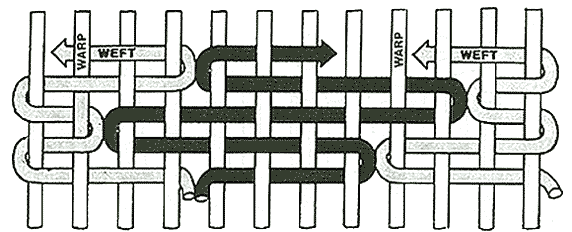Rugs are one of my favorite starting points for a room design, but they are a big investment. If you have ever shopped for a rug you know that there are a wide range of looks, sizes and construction, not to mention pricing to consider when making your selection. Today I thought it would be helpful if I shared some info to help better understand the various ways that rugs are made and how that impacts the price.
Obviously rugs can be constructed using a variety of fibers from natural ones like jute, to wool and cotton as well as man made fibers. For the purpose of understanding construction types we are going to talk only about rugs made from wool.
Hand Knotted:
This is the most labor intensive method of making a rug. Weavers, working on a loom, tie each individual knot onto the warp strings and create the pattern as they work across the row, counting knots and changing color. There are different types of knot and a rug's quality is often determined by the number of knots per inch, with the higher numbers meaning higher quality. The rugs are fringed as a way to finish the piece using the warp strings.Hand knotted rugs wear like iron and some increase in value the older they get. One could delve very deep to understand the wide variety of styles, patterns and history of hand knotted rug making around the world.
Hand Tufted:
These rugs are created using a fabric backing onto which the rug pattern has been transferred, and a tufting gun which pushes the wool yarn in loops, through the backing. Once the rug is finished a scrim is applied to the back using glue in order to hold the yarns in place as they are not knotted. Finally a canvas backing is applied over that. The rugs are then sheared to cut the loops. Any fringe would be added by sewing it on as it is not part of the construction. The process of hand tufting is not nearly as time consuming as hand knotting, making these rugs less costly.
Hand Hooked:
Made in a fashion similar to tufting but on a mesh backing and with short loops which are not trimmed and create the pile. Sometimes a finer version of this process is done called petit point, which has the look of fine embroidery and is much more time consuming to produce, therefor more expensive.
Flat Woven:
Also made on a loom, these rugs have no pile and are made by weaving a weft yarn over and under the warp yarn and can be made by hand or machine. The pattern can be seen on both sides of the rug making them reversible and a great value. Kilims, Dhurries, Navajo rugs are examples of this style.
Machine Made:
These rugs are produced on power looms and are often referred to as Wilton woven rugs, meaning that they are created on a Wilton loom. Belgium has created a name for itself for producing these rugs and in the US the brand Karastan is synonymous with high quality machine loomed rugs. Sometimes it is difficult for those with an untrained eye to see the difference. Turning the rug over, the back side tells all. There, if the rug is hand knotted, you can clearly see the full color as well as the knot, where as with a machine made rug what you see is a more watered down color due to an over stitch pattern. The knots are hard to distinguish because of the over stitch. Machine loomed rugs do not usually hold up as well over time as those which are hand knotted, but are much less expensive.
While doing my "research" I found this little Pottery Barn video which further helps in understanding how a rug is made.
Hopefully being armed with a little more knowledge about rug construction will help in the decision making process the next time you are in the market for a rug. All of these rug types have their place and purchasing is more about personal taste, budget and what works in the room than anything else.
What have you learned in the process of shopping for a rug?
Enjoy this long holiday week-end friends, a forecast of sunny skies and warm weather will ensure that is the case for me and my family!
Does your room need a “prescription” for a change of decor, function or design? If so please contact me, I would love to help your room feel better with a Room Rx.










4 comments:
Ha! I've learned it can be a very long process! Much easier to start with the rug and build around it. Have a wonderful weekend!
Very interesting post Cathy - I've slowly learned the differences between the various types of rugs but this gave me even more information. I've always liked the look of the hooked rugs, but I often find myself selecting a flat weave for our current home made of natural fibers - they're pretty low maintenance and can transfer into various rooms. Hope you have a wonderful weekend! I gave you a shout out on Twitter the other day too - welcome to Twitter land! do you like it so far?
Hi Cathy, Im with you, I love rugs. This is a great lesson in rug making, and I thank you for that. While I knew some of this, not in as great detail as you posted.
I love to know more than the client knows !hahaha
Have a great weekend.
xo Nancy
Powellbrowerhome.com
great .... Thank you ...
Post a Comment